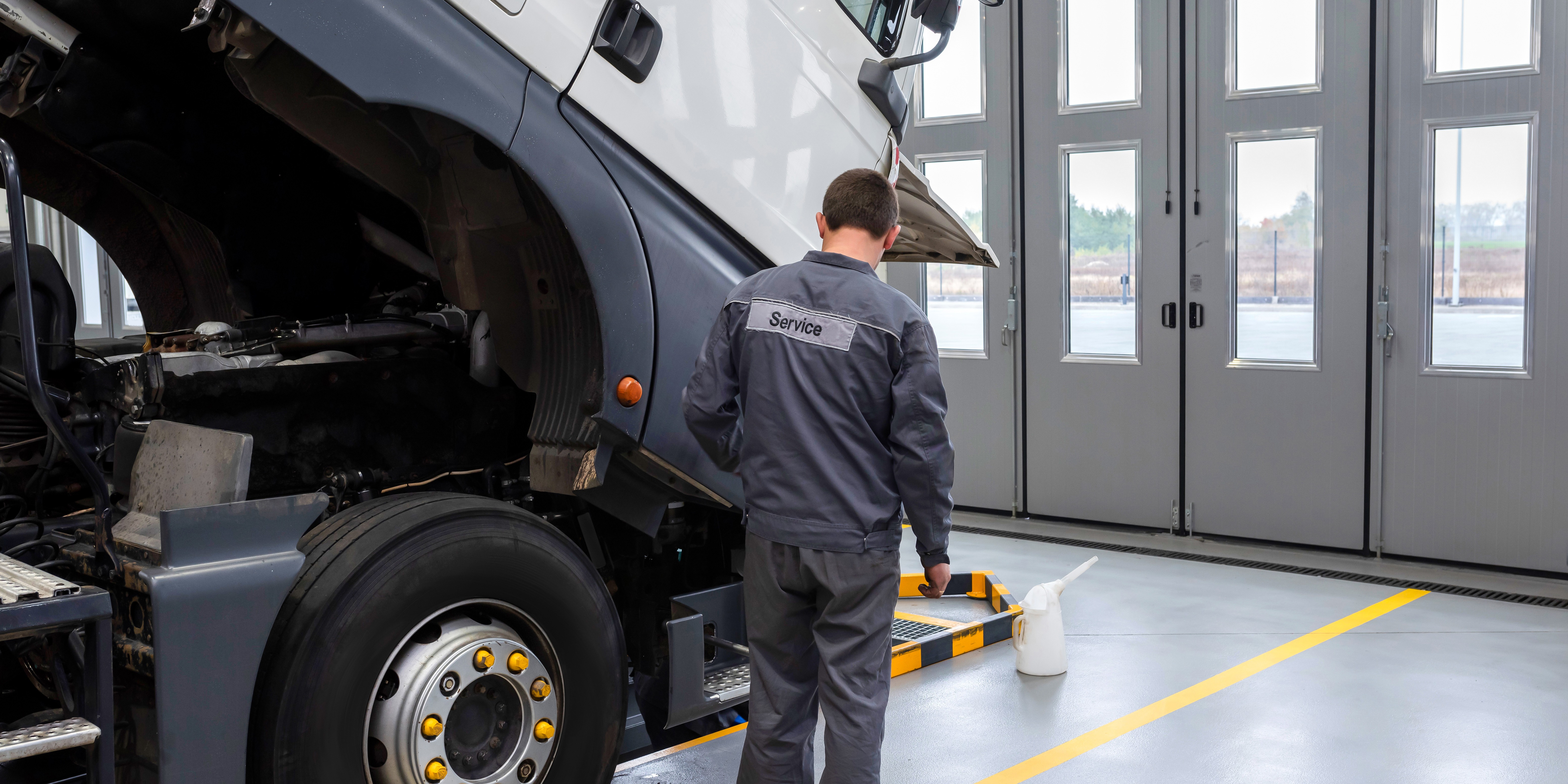
Building Trust with Customers Through Transparency
If you run a diesel, truck, fleet, trailer, or equipment repair shop, you already know the hard truth: trust is your real currency. Fleet managers and owner-operators expect uptime, straight answers, and zero surprises. When estimates are vague, updates are sporadic, or invoices feel “mysterious,” confidence erodes, and so does repeat business. The fix isn’t complicated: be radically transparent from estimate to invoice, and back it up with visual proof and modern workflows your customers can see.
Below is a practical, high-ROI playbook to make transparency your competitive edge, and how ShopView helps you operationalize it across every bay and location.
The trust gap (and how to close it)
Many fleets still feel “kept in the dark.” They don’t want jargon or last-minute fees; they want a clear breakdown of parts vs. labor, accurate timelines, and honest status updates. “Open-book” pricing and steady communication signal you have nothing to hide, and that you’re looking out for their business, not just the current ticket.
Customers also approve work faster when they understand it. Detailed estimates that itemize parts, labor, taxes, and fees eliminate surprises and let buyers make informed decisions before the first bolt turns.
Pillar 1: Transparent, itemized estimates (no surprises)
Start at the front counter with line-item clarity. Show what each service includes and what it costs, “brake pads: $X parts + $Y labor”, instead of a lump sum. The more understandable your estimate, the less friction you’ll face during approval and at invoicing. Industry guidance is consistent: publish all costs up front, and include the breakdown customers need to compare options confidently.
For commercial diesel work, the same rules apply, then turn the dial further: attach the relevant diagnostic notes, PM intervals due, and any compliance-sensitive work (DOT items, emissions, etc.) so fleets can prioritize repairs quickly. Clear line items and explanations on the final invoice reinforce the trust you established at estimate time.
Pro tip: generate estimates through your shop management system so the parts/labor split, taxes, fees, and notes are consistent every time. Email or text the estimate directly, with one-tap digital approval.
Pillar 2: Upfront communication & predictable updates
Silence is the biggest anxiety generator for a fleet manager. Use two-way texting and a self-service portal to answer questions without phone-tag. Set the expectation: “You’ll get a status update daily by 3 p.m.” Even when timelines slip, proactive communication preserves trust and lets customers re-route drivers or loads.
Digital reminders and progress notifications reduce “Is Truck 42 ready yet?” calls and keep everyone aligned on ETAs. Modern platforms are built to send appointment confirmations, status changes, and completion notices automatically, no manual copy-and-paste required.
Pillar 3: Visual proof (show, don’t just tell)
Photos and short videos turn skepticism into approvals. A picture of a cracked brake line, a chafed ABS wire, or a leaking pinion seal makes the need obvious, no technical translation required. Shops that adopt digital vehicle inspections (DVIs) report faster approvals because customers can see the problem, not just read about it.
Even simple walk-around photos attached to your estimate “demystify” the repair scope and reduce disputes later. And yes, images also help your team document what was fixed, which is invaluable if a complaint pops up months later.
Pro tip: standardize photo capture on every DVI. Aim for at least three images: the failed component, the surrounding context, and the repair completed.
Pillar 4: Put transparency on rails with ShopView
Transparency is easier when the shop runs on one system from estimate to invoice. ShopView is built for heavy-duty operations (diesel, truck, fleet, trailer, equipment), so the transparency pieces most fleets care about, DVIR/DOT/IFTA, telematics, parts availability, tech notes, and job status, live in one place.
- Real-time visibility: Every job, status, tech, and part is tracked live. Shops switching to ShopView often see 20 - 30% revenue growth in ~90 days and 30% faster invoice turnaround as approvals speed up and lost hours shrink.
- Telematics + DVIR integration: Fault codes and mileage from systems like Samsara/Geotab can trigger repair orders automatically; DVIR defects become tasks, and DOT inspections are scheduled and tracked, no double entry.
- Compliance clarity: Top-tier heavy-duty platforms should handle DOT, DVIR, IFTA, emissions checks, and PM intervals. ShopView centralizes this data so fleets see you’re on top of their regulatory risk.
- Parts and approvals connected: Real-time inventory plus digital approvals shortens cycle time and prevents idle bays. Many shops report 1.5+ admin hours saved per day and >$5K/month in added billable time after going digital.
The net effect: fewer surprises for customers, faster green-lights on work, and cleaner paper trails if questions arise.
Pillar 5: Make compliance a trust signal, not an afterthought
Fleet managers sleep better when they know their DVIR defects are addressed quickly and auditable, their DOT items aren’t falling through the cracks, and IFTA mileage is logged properly. By integrating DVIRs and compliance workflows directly into your job pipeline, you demonstrate professionalism and reduce admin load. On ShopView, DVIR defects can auto-create work orders; DOT and IFTA tracking live alongside the RO, so updates to compliance status are visible in the same timeline customers already follow.
SaaS > legacy: transparency that scales (and costs less)
Cloud (SaaS) platforms eliminate server headaches, enable mobile bay-side workflows, and roll out updates without downtime. Independent and mid-sized shops report 60 - 80% lower IT costs over five years when they switch from on-prem to cloud, because there’s no hardware to maintain and far fewer paid emergencies when something breaks.
Operationally, it’s simpler to be transparent when the whole shop runs on a secure, always-current system: techs capture photos and notes on tablets, service writers send itemized estimates with a click, customers approve from their phones, and managers watch capacity and parts flow on live dashboards. That’s transparency you can execute daily, not just promise.
How to implement transparency in 30 days
Week 1: Estimates that explain themselves
- Turn on line-item estimates (parts/labor/fees/taxes) in your system.
- Add a one-tap Approve button and “Questions?” reply link to every estimate email/text.
Week 2: Status without phone-tag
- Enable two-way SMS plus a simple customer portal.
- Set a standard: daily status by 3 p.m. for every active RO.
Week 3: Visual evidence by default
- Require three photos on every DVI and at least one “repair complete” photo.
- Train techs to annotate images (“Left steer tire showing cords”).
Week 4: Compliance and telematics in the loop
- Connect DVIR, DOT, IFTA, and telematics so defects and fault codes auto-generate tasks or ROs.
- Add compliance status to customer-visible updates.
What your customers will feel (and why they’ll stay)
- No surprises on price. They saw the parts/labor breakdown on day one.
- No black boxes on status. They received predictable updates (and could check a portal anytime).
- Proof beats persuasion. Photos and short clips made approvals easy and defensible.
- Confidence in compliance. DOT/DVIR/IFTA are documented, auditable, and on schedule.
- Faster cycle times. Integrated approvals, parts pre-staging, and real-time boards keep trucks moving and invoices out.
Build transparency into your brand with ShopView
Transparency isn’t a tagline; it’s a system. ShopView gives heavy-duty shops the rails to run on, from itemized digital estimates and photo-rich DVIs to real-time boards, connected parts, and integrated compliance. The results show up fast: shops frequently report 20 - 30% revenue growth in the first 90 days, along with marked drops in “Where’s my truck?” calls and faster invoice turns.
Ready to turn trust into your unfair advantage?
Book a ShopView demo to see DVIR/DOT/IFTA workflows, telematics-driven ROs, real-time shop boards, and photo-rich DVIs in action, then put them to work on your next estimate.
.png?width=1500&height=1500&name=11%20(1).png)








.png?width=1500&height=1500&name=1%20(1).png)

%20-%20Copy.png?width=1500&height=1500&name=2%20(1)%20-%20Copy.png)



